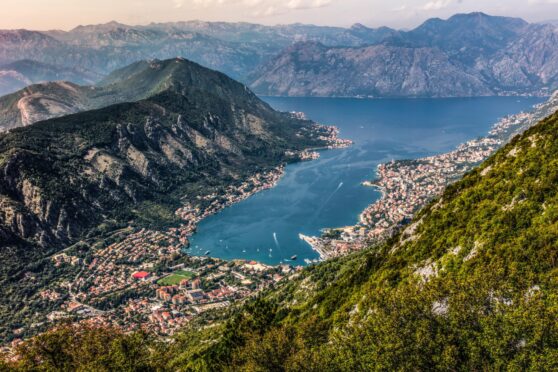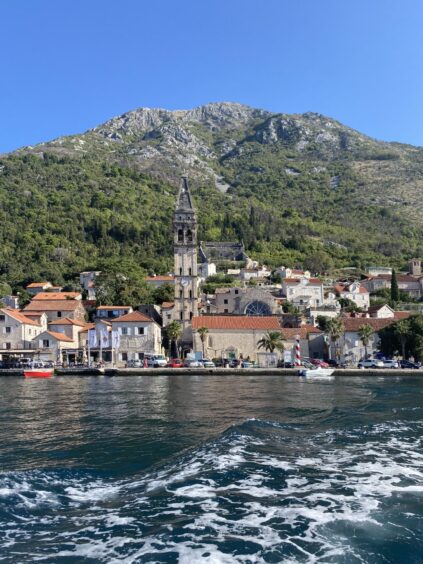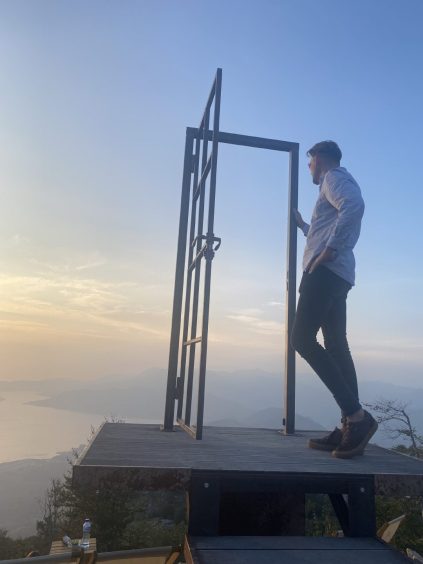
Quaint fishing boats bobbed as the sun shone on the Adriatic Sea, creating a sparkling tableau. With a glance at the mountains towering over the cove, I dove into the deep-blue waters of the Bay of Kotor.
Despite being one of the smallest countries in Europe, Montenegro packs a punch. From crystal-clear lakes to majestic mountains, and with influences from the Venetian Republic to the Ottoman Empire, Montenegro is a melting pot of geography and culture. However, I’d taken the short flight to the Balkans for a good old beach holiday.
While tourists flock to Croatia, just across the border lies a coastline less developed and (whisper it quietly) more affordable, dotted with more than 100 beautiful beaches. Most first-time visitors to Montenegro base themselves in one of three towns: Kotor, Dobrota or Perast. It’s hard to find superlatives for the 65 miles (106km) of coastline and no wonder Lord Byron called the snaking fjord the “most beautiful encounter between land and the sea”.
Kotor Old Town – a Unesco World Heritage site – rightly grabs the headlines and, winding steeply uphill through the narrow cobbled streets surrounded by city walls, I feel the medieval grandeur of the place. The influence of Venetian palaces, pillars and churches, combined with the waterside setting, mean you can easily mistake Kotor for an Italian lakeside town. Despite the visiting cruise ships, Kotor’s character is preserved in small details. As I sip my coffee in a square overlooking the impressive St Tryphon’s Cathedral, freshly washed linen flutters in the wind from baroque balconies and the frantic footsteps of children playing in the street blend with church bells.

If peace and quiet is what you’re after, it’s worth choosing the charming and tranquil town of Perast as a base. Mirroring Kotor’s good looks, but without the crowds and with countless hidden rocky coves and pontoons for swimming, the coast here has an air of seclusion. The town only has one street, but with 16 churches possesses a dreamy quality.
Again, I half-thought I was in Venice. It was after washing down some deliciously fresh seafood with rakija, a ferociously powerful brandy and a Montenegrin staple, that I was reminded where I was.
The seafood in question came from the waterside restaurant at the Heritage Grand Perast, which would also serve as my home for the evening. The five-star hotel lives up to its past life as an 18th-century royal palace and I certainly felt regal as I sat out on the balcony enjoying a brilliant breakfast.
The hotel’s Baroque beauty conceals the modern luxuries of two pools, a sauna and a Moroccan-style hamman bathhouse. But it’s the hotel’s ethereal location that makes it special. It nestles just yards from the twinkling Adriatic.
Adding to the magical feel of the place is Gospa Od Škrpjela or Our Lady Of The Rock. Like something out of mythology, the island sits in the bay just opposite the hotel.
In fact, a fairytale would be easier to believe than its actual story. The island was artificially made in 1452 around a rock where an image of the Madonna was found – every year on the same day locals would row over with stones to continue what they started.

Although Montenegro is primarily known as a budget destination, those with a bit of extra cash should consider a stay on nearby Mamula Island. As our boat glided over the sea, a fortress appeared on the horizon. The uber-friendly staff came to meet us and take our bags; we could have been starring in an Agatha Christie murder mystery novel but there was no whodunnit. Sitting back on the hotel’s turret terrace watching the sunset colour the mainland purple, the only threat of death was to expire from happiness.
Only adding to my euphoria was the first glimpse of my room. Previously where a cannon pointed out to sea, now lay a personal firepit, and the bed gazed out on a sea view. The room was tastefully designed with an asymmetrical aesthetic, grand and airy.
Despite all the luxury and natural beauty, what I found special about Montenegro was the friendliness of its people. Arriving for lunch at the Radjenovic Household, an authentic B&B, we were met by our smiling host and copious amounts of homemade brandy. As we tucked into our mezze starters, traditional dishes like stuffed aubergine outshone any fine dining. The conversation flowed despite the language barrier and grandma beckoned us over with a warm smile, gesturing for us to watch her make the makaruli – a Montenegrin pasta. After being so warmly welcomed into the Radjenovic’s home, I realised that, just like the slogan plastered in my Glasgow home city, it’s the people that make a place.
Factfile
Mamula Island double rooms from £430 per night (min two nights). Heritage Grand Perast by Rixos double rooms from £192 per night. Fly Edinburgh to Tivat via London Gatwick with easyJet from £51 one way. One night at Sofitel London Gatwick from £166.50.
The Bay of Kotor and its quiet historic streets, right; and main. This picturesque medieval town is now protected as a Unesco World Heritage site.

Enjoy the convenience of having The Sunday Post delivered as a digital ePaper straight to your smartphone, tablet or computer.
Subscribe for only £5.49 a month and enjoy all the benefits of the printed paper as a digital replica.
Subscribe